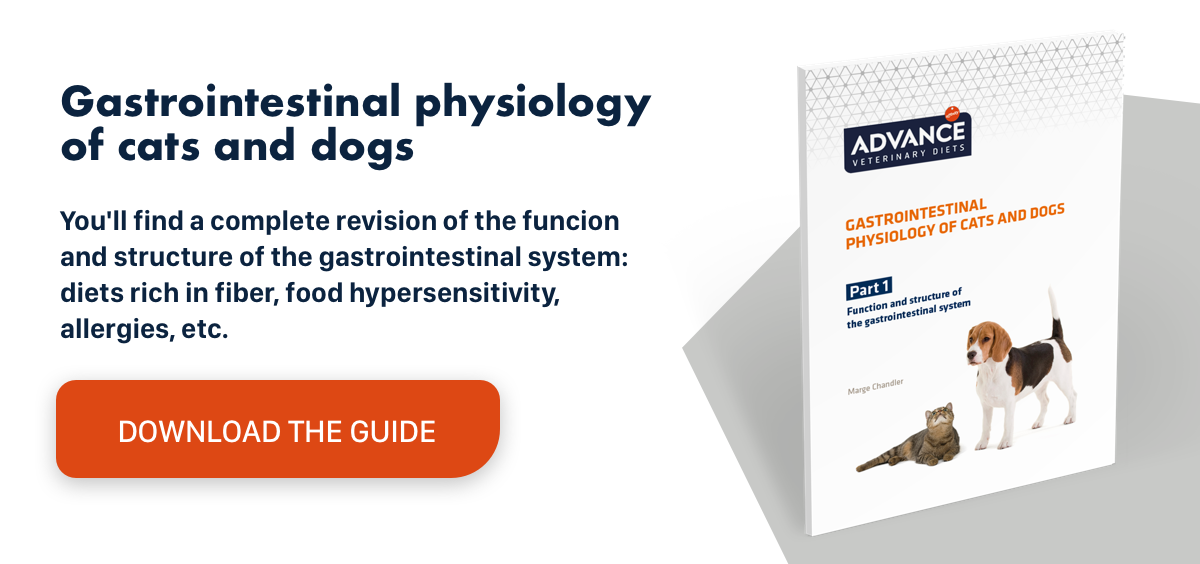Faecaloid vomiting: causes, diagnosis and treatment
What is faecaloid vomiting?
Faecaloid vomiting in dogs is a type of vomiting indicative of an intestinal obstruction, so a correct anamnesis is important to guide the diagnosis. It is called faecaloid because the vomit has the characteristic smell of faeces. It is a common problem in dogs and cats.
Faecaloid vomiting: causes
The most frequent cause of intestinal obstruction is the presence of an intraluminal foreign body. Typically encountered in dogs are toys, bones, fruit stones, stones, bits of plastic, balls and fishing hooks, while cats tend to swallow more linear foreign bodies, such as threads, strings, decorations, etc. Such cases can develop into a very serious clinical picture with total obstruction as the intestinal loops may fold around the linear body, which has become attached to the base of the tongue or the pylorus, in an attempt to evacuate it from the body. Foreign bodies can cause partial or total intestinal obstructions; when detected in time, they do not usually result in any permanent damage to intestinal vascularisation.
Other causes of intestinal obstruction include extraluminal compression of the bowel or a very thick bowel wall. Common examples are volvulus (intestinal loops twisting around themselves), intussusceptions (one segment of intestine enfolding within another), infiltrative neoplasms in the wall and strangulated hernias, as well as some less frequent causes (abscesses, scars, granulomas, and so on).
Intestinal intussusception involves invagination of an intestinal segment within the lumen of an adjacent segment. Single or multiple cases may occur throughout the intestinal tract. More often than not it affects the ileocolic junction. It occurs in animals under 1 year old and is less frequent in cats. It is associated with various intestinal diseases, parasitic diseases, parvovirus, distemper, stomach tumours and linear foreign bodies that can disrupt normal motility of the segment.

Diagnostic examinations
An abdominal X-ray should be performed to diagnose a suspicion of obstruction. If a conclusive diagnosis cannot be reached, other tests, such as an abdominal ultrasound, may be required. In addition, blood tests should be conducted to check for systemic alterations (electrolyte imbalances, elevated inflammatory markers, etc.).
Faecaloid vomiting: treatment
A surgical intervention is necessary to remove the foreign body or resolve any intussusception, for example. As an intestinal obstruction causes fluid and electrolyte imbalances and bacterial overgrowth which aggravates the picture, patients with severe fluid and electrolyte imbalances must be stabilised before surgery. A broad-spectrum antibiotic therapy should be used to treat or prevent endotoxic shock. In some cases, the only alternative is to resect some intestinal segments if their vascularisation has been compromised.
The platform features the clinical case of a cat with vomiting and asthenia. It goes through the causes of chronic vomiting in cats, as well as the diagnostic approach and its treatment.
